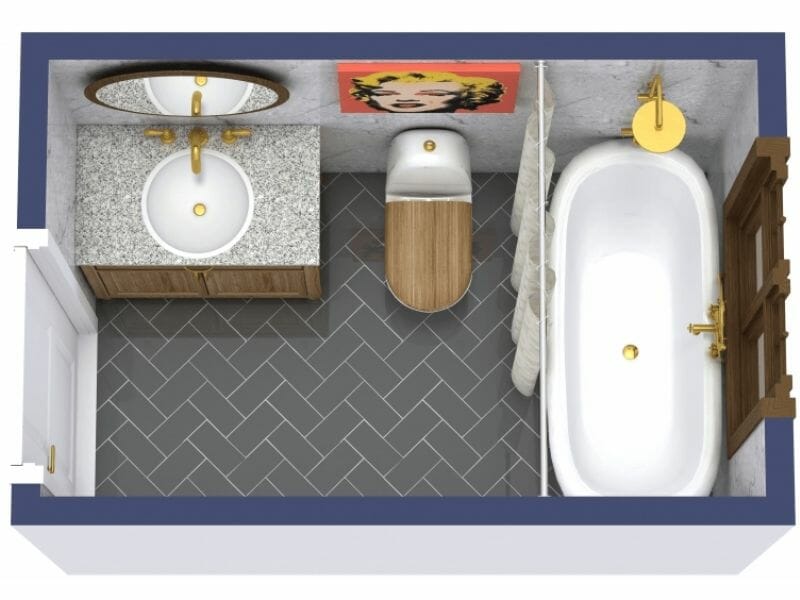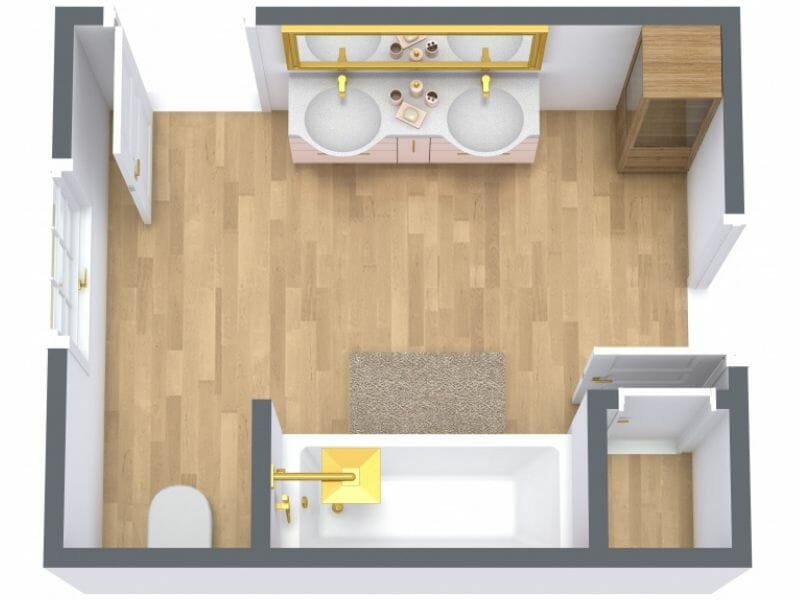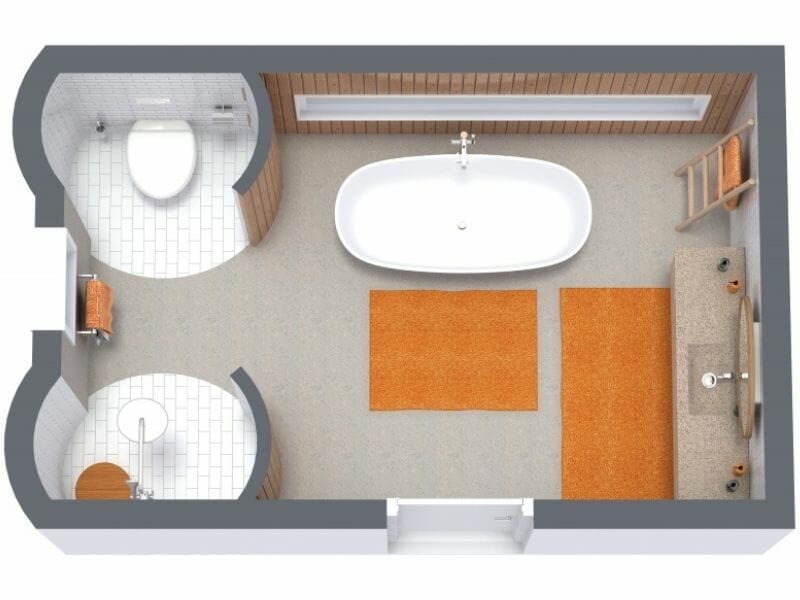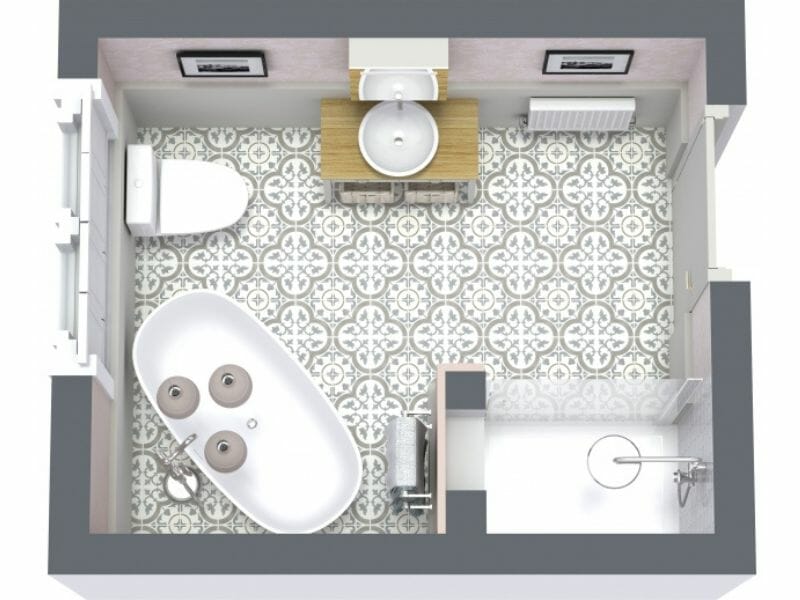Bathroom Layout 101: A Guide to Planning Your Dream Bathroom
A functional bathroom layout should maximize your available space and combine your bathroom fixtures with efficiency.

When designing your bathroom layout, start by positioning your sink, shower, tub, and toilet.
Next, think about storage solutions, wet and dry zones, and how to tie everything together with beautiful aesthetics.
Browse our bathroom layout ideas below to find inspiration and spark your creativity.
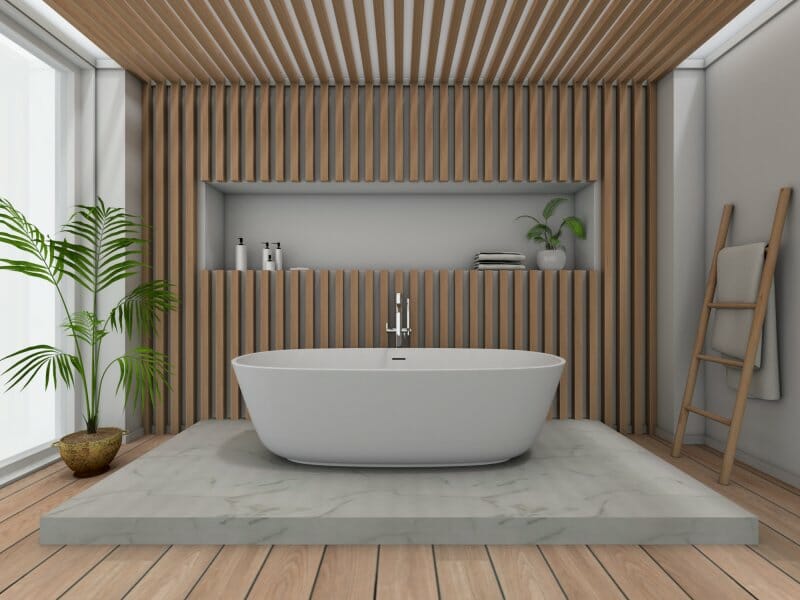
"It is important to create a bathroom layout that is not only aesthetically pleasing, but first and foremost functional"
@kalo.interiors
How to Improve Your Bathroom Layout
There’s plenty to think about when designing your bathroom layout. Here are some quick tips to get you started:
● What to include: Do you really need a bathtub? Bear in mind that a shower requires 40% less floor space. What about a single or double vanity? Or a fitted or handheld bidet? Much will depend on how much space you have available.
● Sizing: Consider using smaller fixtures and fittings. The standard depth of a vanity unit is typically 1 ft 8 inches[1] (50 cm), but you could opt for a 1 ft (30 cm) unit to create extra floor space in tight rooms.
● Zoning: Break your room into wet and dry zones. Your wet area should have adequate waterproofing, while your dry zone should provide enough space for towel-drying and dressing.
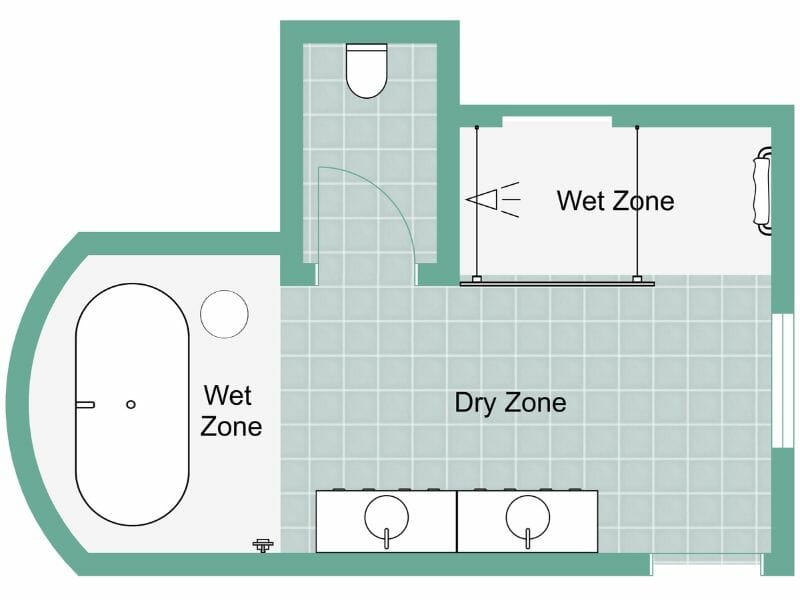
● Movement and flow: You should be able to effortlessly move around your bathroom, switching from one task to another with ease. Avoid obstructions like awkward door swings. Fit an in-wall sliding door to create less of a bottleneck.
● Positioning: Think about where to place your bathroom fittings in relation to each other. For example, it makes sense to have a mirror above your vanity, a towel rail next to your shower, and a bidet next to your toilet.
● Toilet design: A wall-mounted model will make floor cleaning easier while also adding a modern touch. Use a concealed in-wall cistern to save on space.
● Privacy: Consider the line of sight when opening the door and be sure to use frosted glass on any windows or doors. Think about soundproofing measures like a door sweep or in-wall insulation.
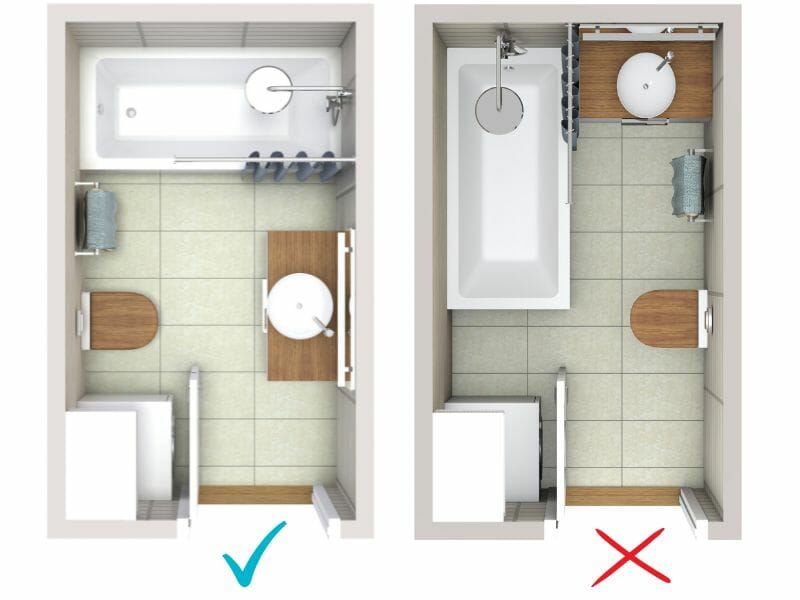
● Accessibility: For older or less able family members, install grab bars around your shower and toilet area. You may also want to widen the doorway, install non-slip tiles, and fit an elevated toilet.
● Storage: There are plenty of bathroom storage options available, from shelving and rails to hooks and cupboards. You can even fit a wall-mounted soap dispenser in your shower to avoid clutter.
How to Decide Bathroom Layout - Beautiful Bathroom Layout Ideas to Inspire
To design your dream bathroom, start by taking a look at our bathroom layout plans below.
You can also browse our bathroom floor plan gallery for even more examples. With dozens of bathroom layout ideas, you’re sure to find something that works for you.
Bathroom Layout Do’s and Don’ts
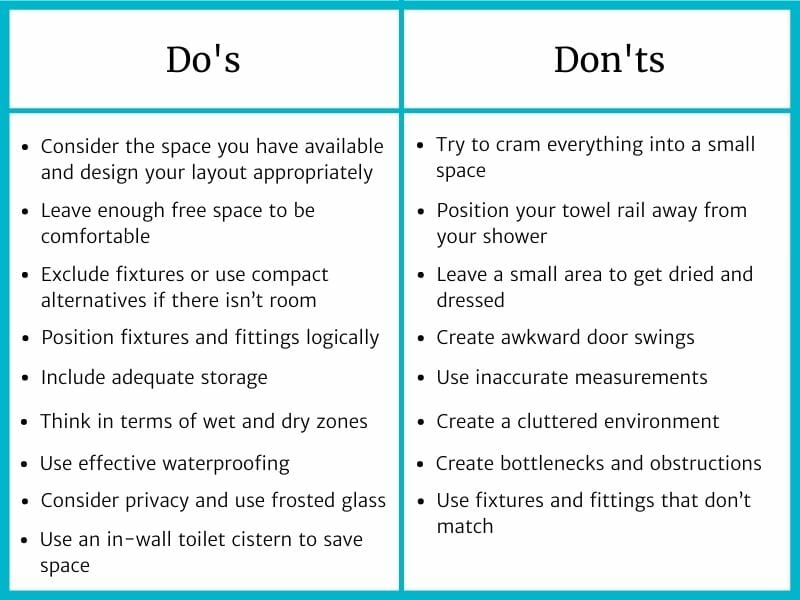
Common Bathroom Layout Dimensions
Here are some standard dimensions to help you layout your bathroom fittings. For more accurate measurements, remember to check your specific models before finalizing any plans.
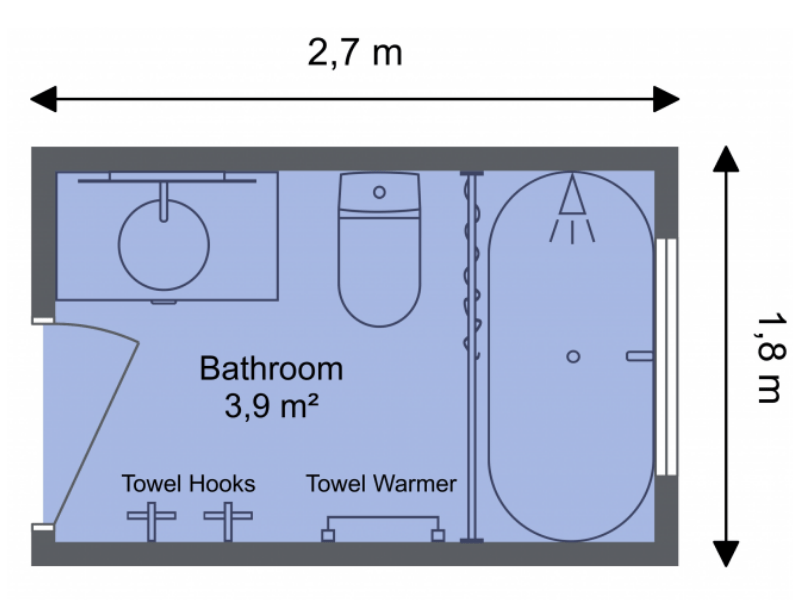
Bathtub
A standard tub is 2 ft 6 inches by 5 ft (76 cm by 152 cm). If you have a larger room, wider 3 ft (92 cm) models are available. You can also opt for a shorter 4 ft 6 inches (137 cm) tub to fit a smaller room.
Soaking tubs are designed for a more relaxing, comfortable soak, so they are larger than standard tubs. You’ll need at least 3 ft by 6 ft (92 cm by 184 cm) available if you want to splash out on one of these more luxurious fixtures

Shower
A shower can be as large as you want to make it (especially when in a wet room environment). But for enclosed showers, we recommend you have at least 2 ft 6 inches square (76 cm).
For a larger shower, you can increase this to 3 ft 6 inches square (106 cm). This should make washing your body more comfortable and help avoid any elbow knocks for taller people.
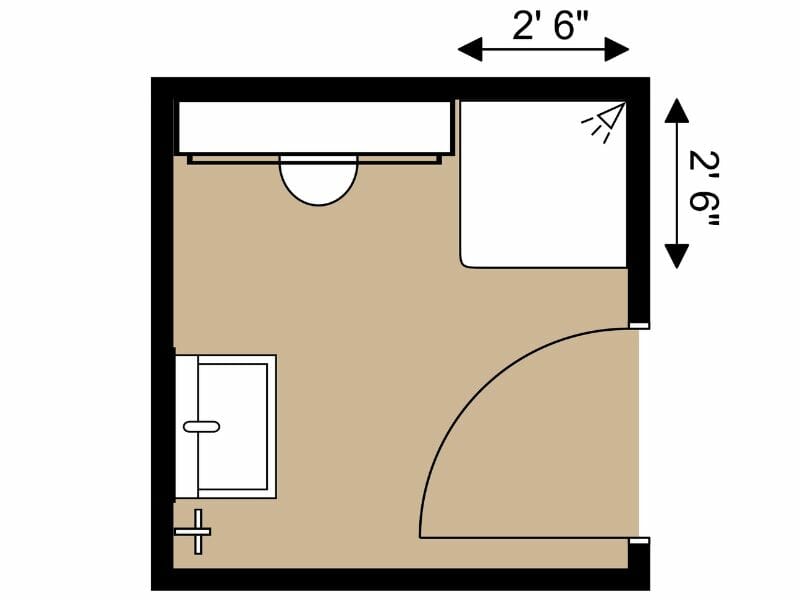
Toilet
2 ft 6 inches square (76 cm) should be plenty of space to fit a standard toilet. If you have any accessibility issues, the width can be increased to 3 ft (92 cm).
Opting for a concealed cistern or wall-mounted model will save you about 1 ft in depth (30 cm).
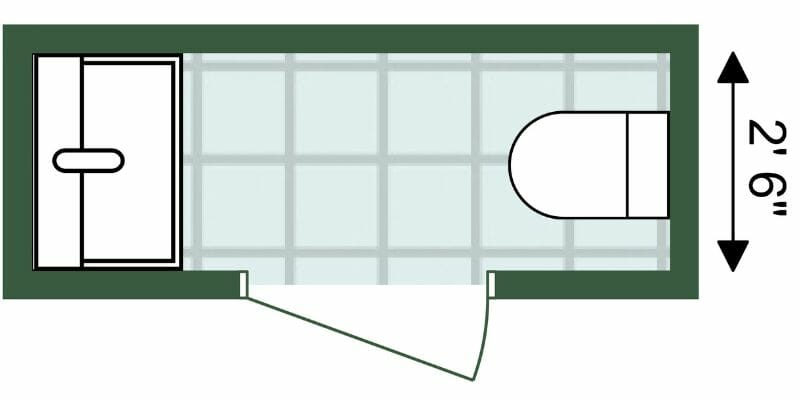
Vanity
A single vanity unit requires at least 2 ft of width by 1 ft 8 inches of depth (61 cm by 51 cm). But, if you have the space, we recommend a larger surface or even a double vanity. This will give you plenty of room to store all those bathroom accessories.
You’ll need at least 5 ft (152 cm) of width if you want to upgrade to a double vanity.
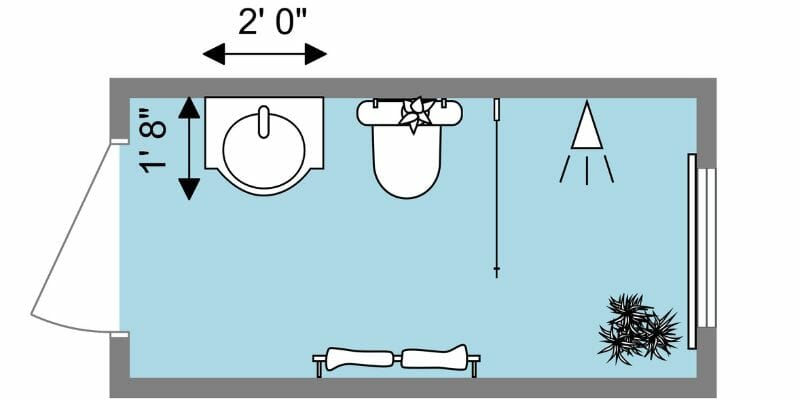
Accessibility
If you’re designing a bathroom with aging in mind, you’ll need to create more space. There are also additional accessories and safety features that you might want to consider.
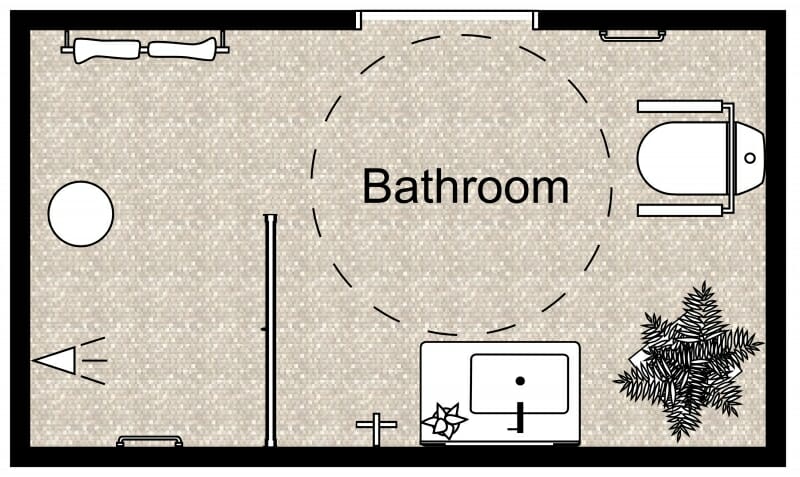
- Shower Seat: To make showering more comfortable
- Grab Bars: For moving around the room safely
- Sliding Door: To make entering the room easier and avoid awkward door swings
- Elevated Toilet: A more practical design for less mobile people
- Slip-Resistant Flooring: Another safety feature to stop floors from becoming a hazard when wet
Bathroom Layout FAQ
Here’s a list of frequently asked questions when designing a bathroom layout:
We recommend that you use our bathroom layout app. It’s completely free to get started and easy to use. You can download the app on your computer or tablet. Then design from scratch or try out one of our bathroom design templates.
The best layout will depend on your individual requirements. Check out our bathroom layout floor plans for some great ideas, and an overview over the various types of bathroom layouts.
Start by deciding on what fixtures and fittings you want to include in your design. Measure your available space and use our bathroom layout planner to find the best possible layout for your space.
Use a Bathroom Layout Design Tool
The fastest and most affordable way to design your bathroom layout is to use the RoomSketcher App. It’s easy to learn, and we have detailed tutorials so you can hit the ground running.
You can even visualize your finished design in stunning 3D or create professional 2D plans for your new bathroom design.
Don't forget to share this post!
Recommended Reads
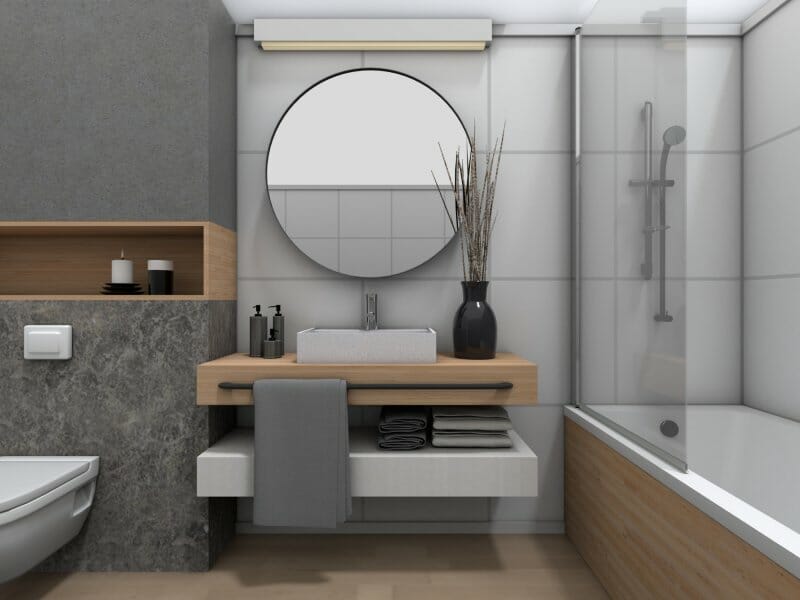
Revamp Your Bathroom on a Budget: 7 Amazing Remodel Ideas
The kitchen is often described as the heart of the home, but the bathroom is where 'me time' takes top priority. After all, it's the place where you begin and end each day.

99 Stunning Bathroom Remodel Ideas to Inspire Your Renovation
Are you planning a bathroom reno but not sure where to start? Our mega list of bathroom design ideas should help get those creative juices flowing.
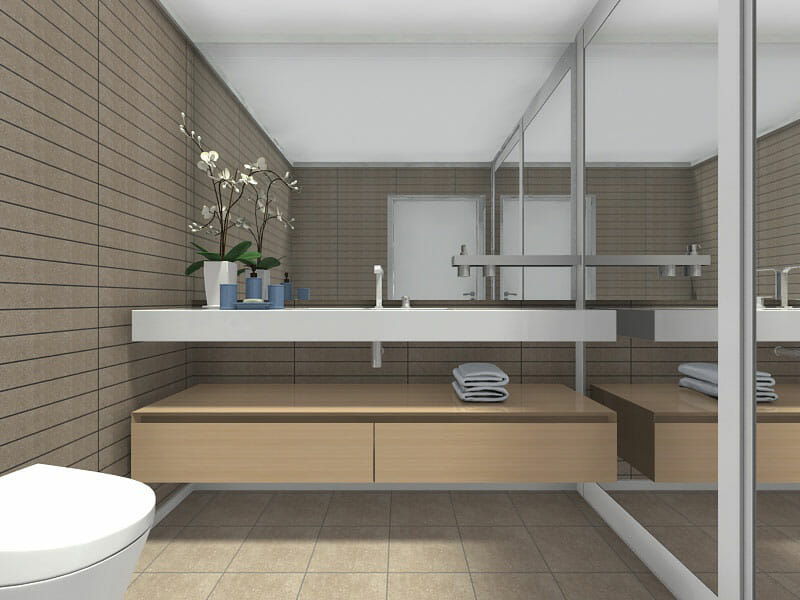
10 Small Bathroom Ideas That Work
Short on space? RoomSketcher shows you 10 Small Bathroom Ideas that really work and how to try them in your own Bathroom Design.

